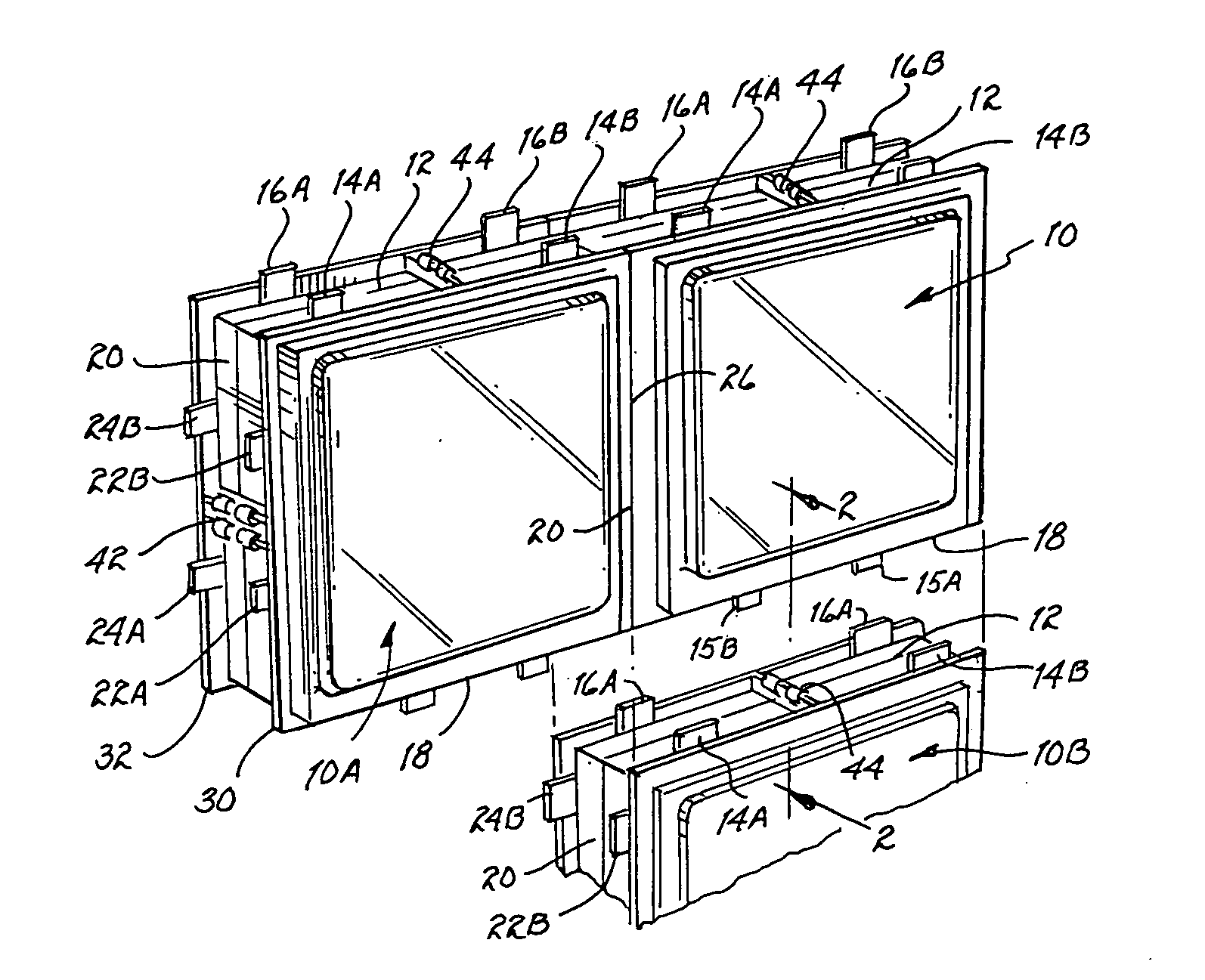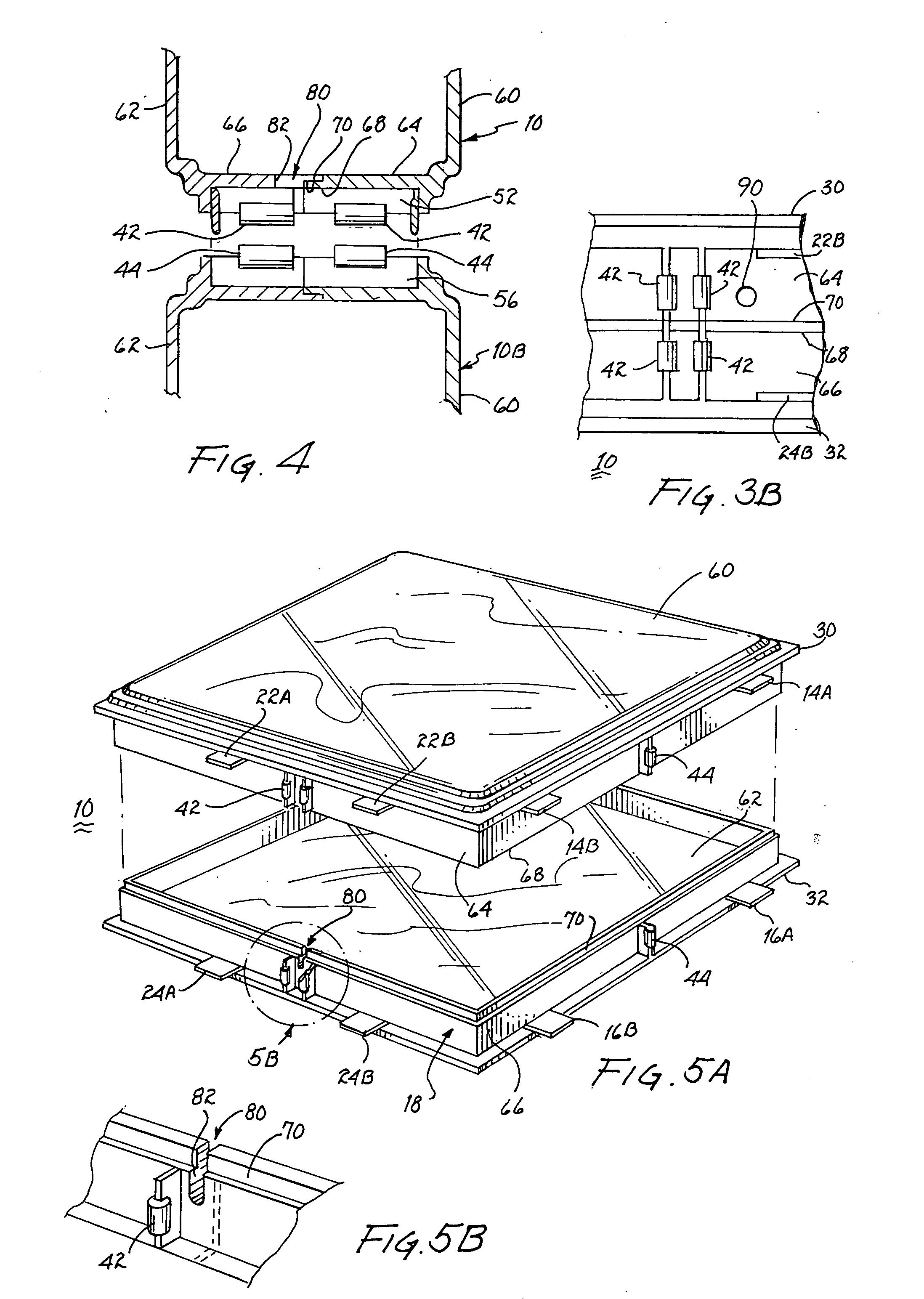Vented hollow plastic block
a hollow plastic block and hollow technology, applied in the field of transparent/translucent blocks, can solve the problems of insufficient structural strength of conventional wood frame construction to support glass blocks, difficult to create, and relatively heavy, and achieve the effect of avoiding imposing stresses
- Summary
- Abstract
- Description
- Claims
- Application Information
AI Technical Summary
Benefits of technology
Problems solved by technology
Method used
Image
Examples
Embodiment Construction
[0027] Interlocking unventilated plastic locks have been developed by the applicant, as illustrated and described in U.S. Pat. No. 5,836,125. The illustrations and writings contained therein are incorporated by reference herein. Accordingly, many of the features common with the present invention, particularly with respect to the interlocking and alignment elements, will be only summarily discussed as the details thereof are set forth in U.S. Pat. No. 5,836,125.
[0028] Referring to FIG. 1 there is shown a plurality of interlocking plastic blocks 10, 10A and 10B which are preferably, but not necessarily, of acrylic material. Edge 12 of each plastic block includes two pairs of alignment tabs 14A, 14B and 16A, 16B. The tabs of each pair of these pairs of tabs are relatively widely spaced from one another as illustrated. Opposite edge 18 of plastic block 10 includes two pairs of alignment tabs of which tabs 15A,15B are shown; these pairs of tabs are spaced closer to one another than pair...
PUM
 Login to View More
Login to View More Abstract
Description
Claims
Application Information
 Login to View More
Login to View More - R&D
- Intellectual Property
- Life Sciences
- Materials
- Tech Scout
- Unparalleled Data Quality
- Higher Quality Content
- 60% Fewer Hallucinations
Browse by: Latest US Patents, China's latest patents, Technical Efficacy Thesaurus, Application Domain, Technology Topic, Popular Technical Reports.
© 2025 PatSnap. All rights reserved.Legal|Privacy policy|Modern Slavery Act Transparency Statement|Sitemap|About US| Contact US: help@patsnap.com



